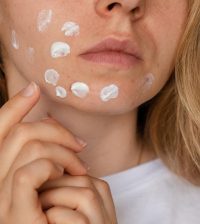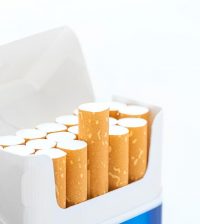- Total Hip Replacement Recovery: Everything You Need To Know
- How Savvy Habits May Help Head Off Dementia
- HHS Launches New Autism Study Despite Experts’ Concerns
- CDC Urges Extra Measles Shot For Some U.S. Travelers Amid Outbreak
- Showerhead Water Limits Rescinded as Trump Targets Household Appliances
- Most Women Aren’t Clear When Menopause Might Start
- New Visual Test For Autism Could Aid Earlier Diagnosis
- Half-Million Children Could Die If U.S. AIDS Relief Is Dropped
- Seasonal Allergies Likely To Grow Worse Under Climate Change
- First Baby Born From Robot-Controlled IVF
As Summer Starts, Sun Safety Slashes Skin Cancer Risk

With many beaches and parks opening in time for Memorial Day, the American Cancer Society is reminding people to practice sun safety.
Overexposing yourself to the sun increases your risk for skin cancer, which is the most common cancer in the United States, with almost 5.5 million cases each year. That’s more than breast, colon, lung and prostate cancers combined.
“COVID-19 has forced Americans to remain indoors, and many people are anxious to get back to outdoor activities with some stay-at-home orders being lifted,” said Dr. Laura Makaroff, senior vice president of prevention and early detection at the American Cancer Society (ACS).
“As more people get outside, practicing social distancing and avoiding crowded areas is still very important to reduce the risk of COVID transmission, and it is also important to not forget the risks of sun exposure and sunburn and take appropriate steps to protect your skin,” Makaroff said in an ACS news release.
One of every 5 Americans will have some type of skin cancer in their lifetime. Melanoma, the deadliest type accounts for about 1% of all skin cancer cases, the ACS said.
But skin cancer is very preventable. More than 90% of skin cancers are caused by exposure to ultraviolet radiation from the sun or indoor tanning.
You can reduce the risk of skin cancer by:
- Not intentionally getting a sunburn or tan — no tan is a safe tan.
- Apply lots of broad-spectrum sunscreen with at least 30 SPF (sun protection factor).
- Wear sun-protective clothing and broad-brimmed hats.
- Seek shade from between 10 a.m. and 4 p.m., when the sun is strongest.
- Use extra caution near water, snow and sand.
More information
For more on skin cancer, see the American Academy of Dermatology.
Source: HealthDay
Copyright © 2025 HealthDay. All rights reserved.










